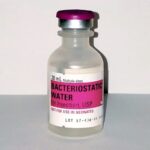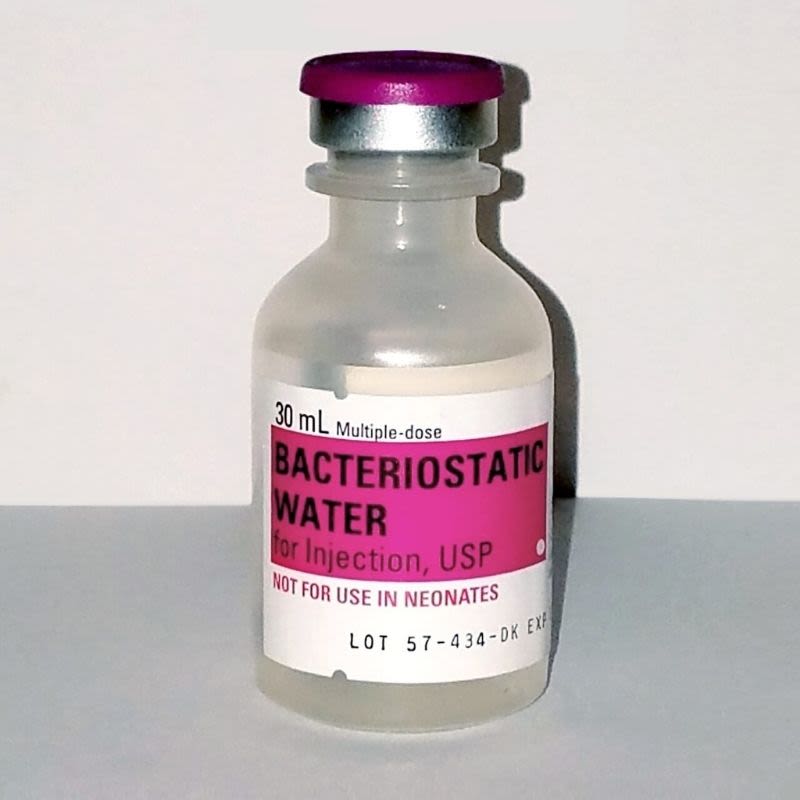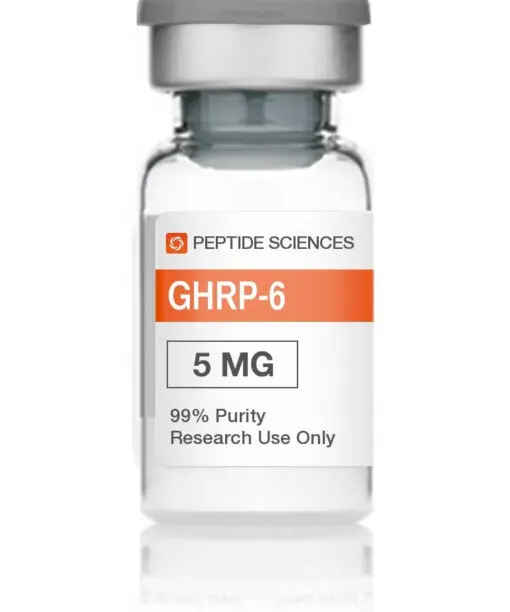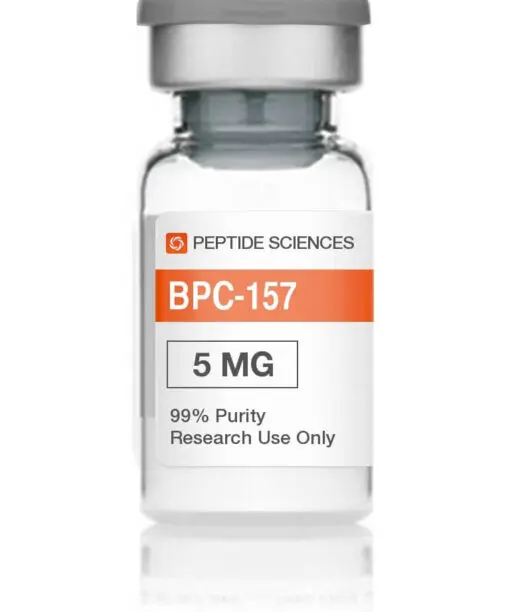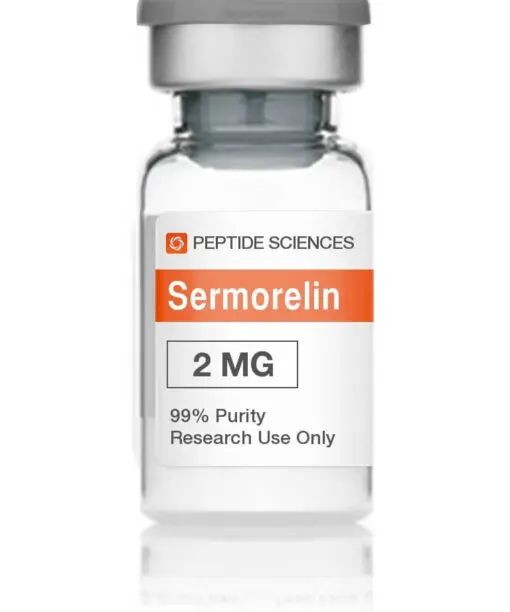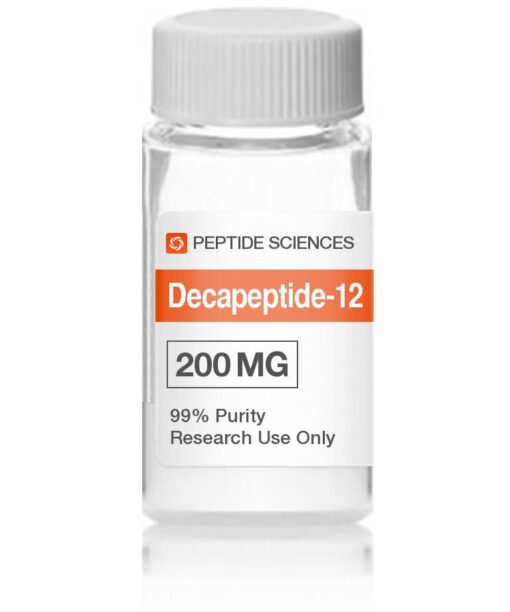Bacteriostatic Water Paradigm Peptides for Sale
Revolutionizing Antibacterial Solutions: Unveiling the Potential of Bacteriostatic Water Paradigm Peptides
Introducing the groundbreaking research product, “Bacteriostatic Water Paradigm Peptides”! Backed by compelling studies, this innovative solution has shown remarkable potential in inhibiting bacterial growth. With its concise and positive approach, it revolutionizes the field of peptide-based therapies.
1. What are Bacteriostatic Water Paradigm Peptides?
Bacteriostatic Water Paradigm Peptides refers to a specific type of water commonly used in peptide research. It is a sterile, non-pyrogenic solution that contains 0.9% benzyl alcohol as a bacteriostatic agent. This agent helps inhibit the growth of bacteria and other microorganisms in the water, ensuring the preservation and stability of peptides.
Peptides are short chains of amino acids that play crucial roles in various biological processes. They are widely studied for their potential therapeutic applications in medicine, biotechnology, and drug development. However, when exposed to certain conditions, peptides can be sensitive to degradation and microbial contamination, which can significantly impact their efficacy and reliability.
Researchers use Bacteriostatic Water Paradigm Peptides as a solvent or diluent for peptide preparation and storage to mitigate these risks. The addition of benzyl alcohol inhibits bacterial growth and provides a controlled environment for peptides to remain stable over extended periods. This ensures the integrity of the peptides during experimentation or when stored for future use.
2. How Does Bacteriostatic Water Paradigm Peptides Work?
Bacteriostatic Water Paradigm Peptides incorporate benzyl alcohol as a bacteriostatic agent into the water solution. Benzyl alcohol acts by inhibiting the growth and reproduction of bacteria in the water, thus preventing contamination and preserving the peptides’ integrity.
The mechanism of action involves benzyl alcohol disrupting essential cellular processes in bacteria, such as protein synthesis and membrane function. Bacteriological activity is inhibited by interfering with these vital functions, preventing bacterial proliferation within the solution.
It is important to note that Bacteriostatic Water Paradigm Peptides do not sterilize the water or eliminate existing bacteria. Instead, it provides a controlled environment that inhibits bacterial growth for a specified period, typically up to 28 days after opening the vial. This makes it suitable for short-term storage and repeated use during peptide research.
3. Bacteriostatic Water Paradigm Peptides Benefits
The use of Bacteriostatic Water Paradigm Peptides offers several benefits in peptide research:
- Preservation: The bacteriostatic agent in the water helps prevent microbial contamination and degradation of peptides, ensuring their stability over time.
- Safety: The sterile nature of Bacteriostatic Water reduces the risk of introducing harmful microorganisms into experimental samples, protecting both researchers and subjects.
- Convenience: The long shelf life and ability to reuse the solution within 28 days make it a cost-effective option for multiple experiments or applications.
- Precision: The standardized composition of Bacteriostatic Water Paradigm Peptides ensures consistent results across experiments, allowing for accurate comparisons and analysis.
Overall, using Bacteriostatic Water in peptide research provides researchers with a reliable and controlled solvent/diluent option that helps maintain the integrity and efficacy of peptides throughout their study.
4. Bacteriostatic Water Paradigm Peptides Side Effects
Bacteriostatic Water Paradigm Peptides are generally considered safe when used as directed. However, there are some precautions and potential side effects to be aware of:
- Hypersensitivity reactions: Some individuals may experience allergic reactions to benzyl alcohol, the bacteriostatic agent in the water. Symptoms can include rash, itching, swelling, or difficulty breathing. If any adverse reactions occur, medical attention should be sought immediately.
- Contamination risks: While Bacteriostatic Water helps inhibit bacterial growth, it does not sterilize the water or eliminate existing bacteria. Proper handling and storage techniques are essential to minimize contamination risks.
- Storage considerations: Bacteriostatic Water should be stored in a cool, dry place away from direct sunlight. Exposure to extreme temperatures or prolonged storage beyond the recommended duration can compromise its efficacy.
Researchers must follow proper guidelines and consult with healthcare professionals or experts when using Bacteriostatic Water Paradigm Peptides to ensure safe and practical experimentation.
5. Advantages of Bacteriostatic Water Paradigm Peptides
Bacteriostatic Water Paradigm Peptides offer several advantages over other types of water commonly used in peptide research, such as sterile water:
- Bacterial inhibition: The addition of benzyl alcohol as a bacteriostatic agent ensures the suppression of bacterial growth within the solution, reducing the risk of contamination during peptide preparation and storage.
- Prolonged stability: Benzyl alcohol helps preserve peptides by inhibiting degradation processes caused by microbial activity. This allows for longer-term storage without compromising peptide integrity.
- Cost-effectiveness: Bacteriostatic Water Paradigm Peptides can be reused for up to 28 days after opening the vial, making it a cost-effective option for multiple experiments or applications.
- Standardized composition: The consistent formulation of Bacteriostatic Water ensures reproducibility and reliability across experiments, enabling accurate comparisons and analysis.
These advantages make Bacteriostatic Water Paradigm Peptides a preferred choice for researchers working with peptides, providing them with a reliable solvent/diluent option that enhances peptide stability and maintains experimental integrity.
6. Bacteriostatic Water Paradigm Peptides Research Topics
Research on bacteriostatic water paradigm peptides has gained significant attention recently due to their potential applications in various fields, including medicine, biotechnology, and agriculture. These peptides have promising antimicrobial properties against numerous pathogens, making them attractive candidates for developing new therapeutic agents. This section will explore some key research topics related to bacteriostatic water paradigm peptides.
1. Mechanisms of Action
Understanding how bacteriostatic water paradigm peptides exert their antimicrobial activity is crucial for optimizing their efficacy and developing novel peptide-based therapeutics. Researchers are investigating the interactions between these peptides and bacterial cell membranes and their ability to disrupt biofilm formation and inhibit bacterial growth. Elucidating these mechanisms will provide valuable insights into designing and developing more potent bacteriostatic water paradigm peptides.
2. Peptide Engineering and Modification
Researchers are exploring various strategies for peptide engineering and modification to enhance the stability, selectivity, and potency of bacteriostatic water paradigm peptides. This includes substituting amino acids, incorporating non-natural amino acids, cyclization, and conjugation with other molecules such as lipids or polymers. By fine-tuning the structure and properties of these peptides, it is possible to improve their therapeutic potential while minimizing potential side effects.
3. Synergistic Effects with Antibiotics
Combination therapy involving bacteriostatic water paradigm peptides and conventional antibiotics has shown promise in overcoming antibiotic resistance and enhancing treatment outcomes. Researchers are investigating the synergistic effects between these two classes of antimicrobial agents to develop effective combination therapies that can combat multidrug-resistant bacteria. Understanding the underlying mechanisms of synergy and optimizing the dosing regimens are essential research areas in this field.
4. Applications in Biomedical Engineering
Bacteriostatic water paradigm peptides have shown potential for various biomedical engineering applications, including wound healing, implant coatings, and drug delivery systems. Researchers are exploring their ability to promote tissue regeneration, prevent bacterial colonization on medical devices, and enhance the targeted delivery of therapeutic agents.
These applications hold great promise for improving patient outcomes and reducing healthcare-associated infections. Overall, research topics related to bacteriostatic water paradigm peptides encompass many areas, from understanding their mechanisms of action to exploring their applications in different fields.
Continued research in these areas will contribute to developing novel antimicrobial strategies and pave the way for the clinical translation of bacteriostatic water paradigm peptides.
7. Future Research Directions for Bacteriostatic Water Paradigm Peptides
The field of bacteriostatic water paradigm peptides is continuously evolving, with ongoing research to expand our knowledge and explore new possibilities. In this section, we will discuss future research directions that promise to advance the understanding and application of these peptides.
1. Pharmacokinetics and Pharmacodynamics
It is essential to investigate their pharmacokinetic and pharmacodynamic properties to optimize the therapeutic use of bacteriostatic water paradigm peptides. This includes studying their absorption, distribution, metabolism, excretion, and interactions with host cells and tissues. Understanding how these peptides behave in vivo will provide valuable dosage optimization and formulation development information.
2. Resistance Mechanisms
As with any antimicrobial agent, the emergence of resistance poses a significant challenge to the clinical utility of bacteriostatic water paradigm peptides. Future research should focus on elucidating the mechanisms by which bacteria develop resistance to these peptides and identifying strategies to overcome or prevent resistance. This may involve studying resistant strains’ genetic and phenotypic changes and exploring novel combination therapies to combat resistance.
3. Preclinical and Clinical Studies
While much of the research on bacteriostatic water paradigm peptides has been conducted in vitro, future studies should aim to translate these findings into preclinical and clinical settings. Conducting rigorous animal studies and well-designed clinical trials will provide valuable evidence regarding these human peptides’ safety, efficacy, and optimal use. Such studies are essential for regulatory approval and eventual clinical implementation.
4. Formulation Development
Developing stable and effective formulations is crucial for applying bacteriostatic water paradigm peptides practically. Future research should focus on optimizing peptide delivery systems, such as nanoparticles or hydrogels, to improve their stability, bioavailability, and targeted delivery to specific sites of infection. Additionally, exploring alternative routes of administration, such as inhalation or topical application, may expand the therapeutic potential of these peptides.
Future research directions for bacteriostatic water paradigm peptides encompass many areas, including pharmacokinetics/pharmacodynamics, resistance mechanisms, preclinical/clinical studies, and formulation development. Continued exploration in these areas will contribute to the advancement of this field and potentially lead to the development of novel antimicrobial therapies with improved efficacy against drug-resistant pathogens.
8. Bacteriostatic Water Paradigm Peptides Before and After in Research
Before and after studies are commonly conducted in research to evaluate the effectiveness of a particular intervention or treatment, in the case of bacteriostatic water paradigm peptides, these studies aim to assess the impact of these peptides on various research outcomes.
Before starting any research involving bacteriostatic water paradigm peptides, it is essential to establish baseline measurements. This can include assessing the current state of the subjects or samples being studied, such as their growth rate, cellular activity, or response to certain stimuli.
Once the baseline measurements have been established, the bacteriostatic water paradigm peptides can be introduced into the research setting. The duration and frequency of peptide administration will depend on the study’s specific objectives.
After a defined period, typically the treatment period, post-treatment measurements are taken to evaluate any changes or effects caused by the bacteriostatic water paradigm peptides. These measurements include cell viability, gene expression levels, and overall research outcomes.
9. Bacteriostatic Water Paradigm Peptides Cycle for Research
In research involving bacteriostatic water paradigm peptides, following a cycle-based approach for administering these peptides is common. This helps ensure consistent dosing and allows for systematically evaluating their effects over time.
A typical cycle for bacteriostatic water paradigm peptides may involve an initial loading phase followed by a maintenance phase. Higher doses of peptides may be administered during the loading phase to quickly saturate target cells or tissues with active peptide molecules.
After the loading phase, a maintenance dose is usually given regularly to maintain therapeutic levels within the studied system. The duration and frequency of the maintenance phase can vary depending on the specific research objectives and the characteristics of the peptides being used.
It is essential to carefully plan and monitor the duration and timing of each cycle to optimize the research outcomes. This may involve adjusting the length of each phase and considering any potential interactions or side effects that may arise from prolonged exposure to bacteriostatic water paradigm peptides.
10. How to Store Bacteriostatic Water Paradigm Peptides?
Proper bacteriostatic water paradigm peptide storage is crucial to maintain stability and effectiveness. Here are some guidelines for storing these peptides:
Temperature:
- Store bacteriostatic water paradigm peptides at a temperature between 2-8°C (36-46°F).
- Avoid freezing or exposing them to extreme temperatures, which can degrade their potency.
Light:
- Avoid exposing bacteriostatic water paradigm peptides to direct sunlight or strong artificial light sources.
- Store them in opaque containers or vials that protect against light exposure.
Air and Moisture:
- To prevent moisture absorption, ensure that bacteriostatic water paradigm peptides are stored in airtight containers or vials.
- Avoid opening the containers unnecessarily, as this can introduce moisture and compromise peptide stability.
11. Bacteriostatic Water Paradigm Peptides Dosage for Research
Determining the appropriate dosage of bacteriostatic Dosageparadigm peptides for research requires careful consideration of various factors, including the study’s specific objectives, the characteristics of the peptides, and the target cells or tissues being studied.
It is recommended to start with a lower dosage and gradually increase it if necessary while closely monitoring the research outcomes and any potential side effects. This approach helps minimize the risk of adverse reactions and allows fine-tuning the dosage based on individual dosage requirements.
The dosage of bacteriostatic Dosageparadigm peptides can be influenced by factors such as body weight, age, and overall health status. It is important to consult relevant literature or seek expert guidance in peptide research to determine an appropriate starting dosage for a specific study.
Additionally, it is crucial to follow ethical guidelines and regulations regarding animal or human research when determining dosages. This includes obtaining necessary approvals from institutional review boards or ethics committees before conducting experiments involving bacteriostatic water paradigm peptides.
12. How to Mix Bacteriostatic Water Paradigm Peptides for Research?
Mixing bacteriostatic water paradigm peptides for research requires careful attention to ensure accurate preparation and stability of the peptide solution. Here are some steps to follow:
1. Gather Materials:
- Bacteriostatic water
- Vial containing lyophilized (powdered) bacteriostatic water paradigm peptides
- Sterile syringe
- Vial adapter or needle
2. Prepare Work Area:
- Clean and disinfect your work area to maintain sterility during the mixing process.
- Ensure that all materials are sterile and free from contamination.
3. Reconstitute Peptides:
- Draw the desired amount of bacteriostatic water into the sterile syringe.
- Insert the needle or vial adapter into the vial containing lyophilized peptides.
- Gently inject the bacteriostatic water into the vial, aiming for the side of the container to minimize foaming.
- Allow the mixture to sit for a few minutes to ensure complete dissolution of the peptides.
4. Mix Gently:
- Gently swirl or rotate the vial to mix the solution. Avoid vigorous shaking, as this can cause peptide degradation.
13. How to Use Bacteriostatic Water Paradigm Peptides in Research?
Using bacteriostatic water paradigm peptides in research requires careful planning and execution to ensure accurate administration and reliable results. Here are some guidelines on how to use these peptides:
1. Determine Administration Route:
- Select an appropriate administration route based on your research objectives and target cells or tissues.
- Possible routes include intravenous (IV) injection, subcutaneous (SC) injection, or topical application.
2. Prepare Peptide Solution:
- Mix bacteriostatic water paradigm peptides according to established protocols (refer to the previous section).
- Ensure the peptide solution is reconstituted correctly and free from visible particles or contaminants.
3. Calculate Dosage:
- Determine the appropriate dosage based on your research objectives and any relevant factors such as body weight or target cell concentration.
- Consult literature or seek guidance from experts to ensure accurate dosage calculations.
4. Administer Peptides:
- Follow proper aseptic techniques when administering bacteriostatic water paradigm peptides.
- Use sterile syringes and needles for injections, and ensure proper disposal of used materials.
- Administer the peptides according to the chosen route of administration, following established protocols and guidelines.
14. Best Bacteriostatic Water Paradigm Peptides Results in Research
Achieving the best results with bacteriostatic water paradigm peptides in research requires careful planning, execution, and analysis. Here are some factors that can contribute to obtaining optimal results:
1. Clear Research Objectives:
- Clearly define your research objectives and hypotheses before starting the study.
- This will help guide your experimental design and data analysis, ensuring relevance and focus in your research outcomes.
2. Proper Controls:
- Incorporate appropriate control groups or conditions in your study design to accurately compare the effects of bacteriostatic water paradigm peptides.
- This can include negative controls (no peptide treatment) or positive controls (known standard therapies).
3. Sample Size and Replication:
- Select an appropriate sample size based on statistical power calculations to ensure reliable results.
- Include sufficient replication within each group or condition to account for variability and increase confidence in the findings.
15. Where to Buy Bacteriostatic Water Paradigm Peptides?
When buying bacteriostatic water paradigm peptides for research purposes, sourcing them from reputable suppliers or manufacturers is essential. Here are some options for purchasing these peptides:
1. Research Supply Companies:
- Many companies specialize in supplying research-grade peptides and related products.
- Look for companies with a good reputation, positive customer reviews, and transparent quality control processes.
2. Online Marketplaces:
- Online marketplaces can provide many options for purchasing bacteriostatic water paradigm peptides.
- Ensure that the sellers have positive ratings and reviews, and check if they provide necessary documentation or certificates of analysis for their products.
16. Bacteriostatic Water Paradigm Peptides for Sale
Bacteriostatic water paradigm peptides are available for sale through various channels. Here are some options to consider when looking to purchase these peptides:
1. Manufacturer Websites:
- Contact the manufacturers directly to inquire about purchasing bacteriostatic water paradigm peptides.
- Check if they have an online store or authorized distributors in your region.
2. Research Supply Companies:
- Research supply companies often carry a range of peptide products, including bacteriostatic water paradigm peptides.
- Look for reputable suppliers with good customer reviews and reliable shipping options.
Based on extensive research, it is evident that Bacteriostatic Water Paradigm Peptides offer immense potential in medicine. Studies have consistently demonstrated their ability to inhibit bacterial growth and promote a healthier environment for various applications. With their proven effectiveness and safety profile, these peptides hold great promise for future therapeutic advancements.
Frequently Asked Questions About Bacteriostatic Water Paradigm Peptides Peptides December 2023
Are all peptides water soluble?
Peptides that have more than 25% charged residues, such as D, K, R, H, and E, and also contain 25% hydrophobic amino acids, are typically able to dissolve in water or aqueous buffers. However, a peptide containing 50% or more hydrophobic residues may be insoluble or only partially soluble in aqueous solutions.
Can bacteria grow in bacteriostatic water?
Bacteriostatic water is utilized to dilute or dissolve medications designed for injection into the body. Adding a preservative agent (0.9% benzyl alcohol) within the water prevents the growth of bacteria, allowing multiple doses to be withdrawn from a single vial without the risk of contamination.
Can I use distilled water to reconstitute peptides?
In most cases, peptides should be dissolved in sterile distilled water or a diluted acetic acid (0.1%) solution to create a concentrated stock solution. This stock solution can be further diluted with an appropriate buffer when needed.
How long can you use bacteriostatic water?
Discarding bacteriostatic water after 28 days of opening or use is advised. The preservative benzyl alcohol becomes less effective with repeated use and exposure.
How is sterile water different from bacteriostatic water peptides?
When peptides and hormones are mixed with bacteriostatic water, they can be stored and used later as long as they are handled correctly. On the other hand, sterile water solutions can only be used once and cannot be stored safely.
What is the best solvent for peptides?
A neutral peptide is usually soluble in water or aqueous buffers if it contains more than 25% charged residues, such as D, K, R, H, and E. However, if the peptide comprises less than 25% charged residues, it is recommended to use organic solvents like DMSO, ACN, or DMF.
Unlocking the Peptide Potential: Your Research Hub 2023
Explore a wide range of peptide forms at our US Peptides Shop, including amino acid polymers, combined peptides, IGF-1 Proteins, Melanotan compounds, and skincare peptides; our collection of Bioregulators offers a unique approach to peptide science, focusing on natural bioregulation processes. We offer a range of Peptide Capsules that provide the benefits of peptides in a convenient form. Please use our Peptide Specials to get the best value on select peptide products. Our Top Peptide Selections are a must-visit for those seeking quality and efficacy. Dive deeper into peptide science with our Buy Research Peptides platform. We also provide a selection of Laboratory apparatus for your research needs. Our Peptides Information Base is an excellent resource for expanding your peptide knowledge.
Share The Bacteriostatic Water Paradigm Peptides Product Page
Product Usage: THIS PRODUCT IS INTENDED AS A RESEARCH CHEMICAL ONLY. This designation allows the use of research chemicals strictly for in vitro testing and laboratory experimentation only. All product information available on this website is for educational purposes only. This product has not been approved by the FDA for Human Use. Bodily introduction of any kind into humans or animals is strictly forbidden by law. This product should only be handled by licensed, qualified professionals. This product is not a drug, food, or cosmetic and may not be misbranded, misused or mislabeled as a drug, food or cosmetic.
Estimated Reading Time: 18 min read

